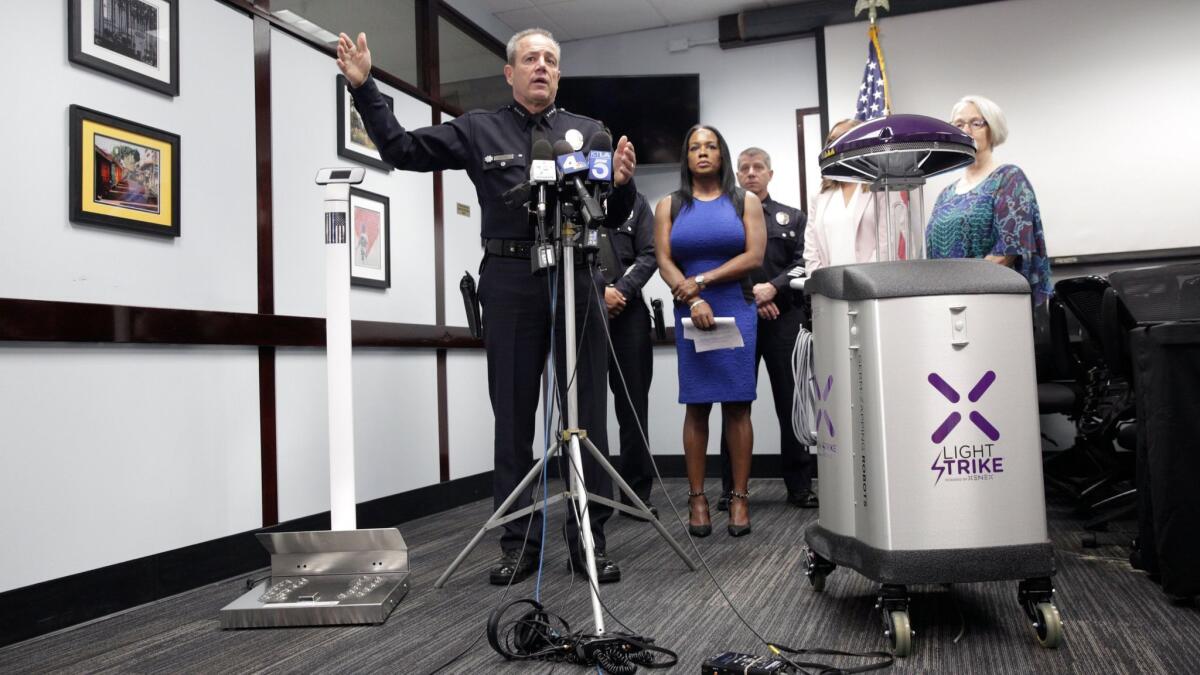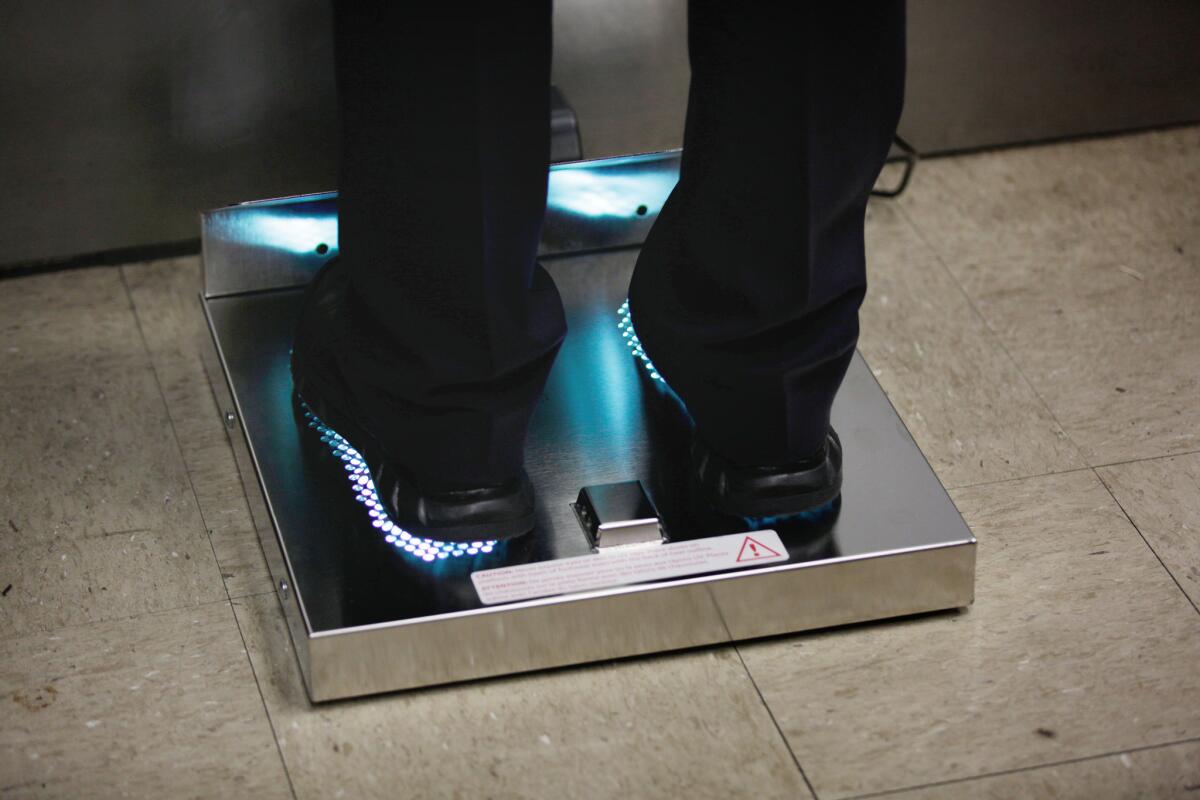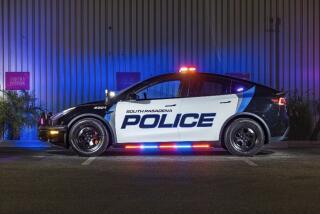Following rat infestation, LAPD deploys robot to sanitize Central Division station

- Share via
It resembles something from a Hollywood movie, but the Los Angeles Police Department hopes a high-tech robot can kill bacteria in a police facility the state declared unsanitary.
On Friday, Police Chief Michel Moore unveiled a robot that uses high-intensity light to kill germs in rooms and another device that uses ultraviolet rays to kill germs on shoes. The LAPD is the first police department to use the robot, Moore said.
“The cleanliness and safety of this facility has always been a challenge and a concern of LAPD,” Moore said.
The deployment of the robot called LightStrike and the shoe sanitizer called HealthySole comes after officers fell ill last month and state officials levied multiple fines for rodent infestations and other unsanitary conditions at the Central Division station. Officers there are responsible for skid row and other parts of downtown L.A.

The unsanitary conditions in the 42-year-old building became the source of growing anger last month, as some officers threatened to seek transfers and city leaders scrambled to address the problems.
The board of directors for the Los Angeles Police Protective League, the police labor union, said last month that “officers worry enough about being shot or injured policing the streets of Los Angeles” and shouldn’t fear taking home infectious diseases.
Moore praised the union for purchasing and bringing the $5,000 footwear sanitizer device to the department’s attention. Mayor Eric Garcetti also ordered the city to purchase a second device, Moore said.
Jerretta Sandoz, the union’s vice president, said the the safety and health of officers and employees is a concern. She said Moore and other leaders took the concerns seriously and looked for solutions.
“This is a good first step,” she said. “We want to make sure it’s at all stations.”
Other steps to sanitize the facility include removing landscaping around the exterior to eliminate breeding grounds for rodents, and cleaning crews are working 20 hours a day.

“I believe it will go a long way to fix a challenging problem,” Moore said, adding that the building will never be free of germs. The robot cost $110,000, Moore added.
In May, the California Department of Industrial Relations issued citations for six violations and a $5,425 fine to the LAPD and two violations and a $1,910 fine to the city Department of General Services, records reviewed by The Times showed.
In November, among the violations at the station on East 6th Street, according to the state, was that the LAPD did not train employees about how the dangerous bacterial disease typhus is transmitted, its symptoms or measures for prevention.
The department also did not have a program to exterminate and control rats, fleas, roaches, gnats, mosquitoes or grasshoppers in the building. Inspectors found all those in the facility, records show.
The division has 414 sworn officers — the largest number in the city.
The station’s proximity to skid row makes it even more challenging to keep the building disease-free with the thousands of homeless people living on nearby streets.
The issues at the Central Division come amid larger concerns about disease and filth across downtown, notably a vermin infestation at City Hall last year. One city employee was diagnosed with typhus, a disease that can be spread by rodents. City Hall workers said they saw fleas, rodent droppings and plants eaten by vermin in the building.
The LAPD bought the robot from Xenex, a Texas company, which says the machines are deployed in more than 400 hospitals, according to the company website. The robot can “disinfect an entire patient room in as little as 20 minutes,” according to the company.
More to Read
Sign up for Essential California
The most important California stories and recommendations in your inbox every morning.
You may occasionally receive promotional content from the Los Angeles Times.














